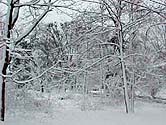
SATURDAY, Dec. 21, 2013 (HealthDay News) — If you exercise outdoors during the winter, be sure to do so safely, an expert says.
The major concern for people who exercise in the cold is hypothermia, or too much heat loss, according to Dr. Cedric Bryant, chief science officer at the American Council on Exercise.
He offered the following tips:
- Dress in layers. This will give allow you to change the amount of insulation that you need during your workout.
- Cover your head. Your body loses about 50 percent of its heat if your head is uncovered at the freezing mark. Wearing a helmet or hat keeps that heat in and means you can stay outside much longer.
- Wear gloves. In cold weather, your blood moves from your hands to the center of your body to keep your internal organs warm and protected. Wearing gloves will keep blood flowing to your hands and prevent cold-related tissue damage.
- Always check the air temperature and wind chill before heading outdoors to exercise and dress appropriately. You’re in danger if you have exposed skin when the wind chill (a combined effect of temperature and wind) falls below minus 20 degrees Fahrenheit.
More information
The U.S. Centers for Disease Control and Prevention has more about cold weather hazards and safety.
Copyright © 2025 HealthDay. All rights reserved.

